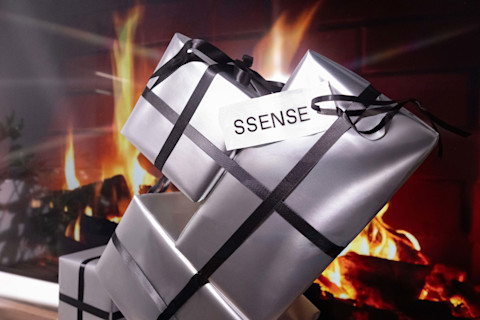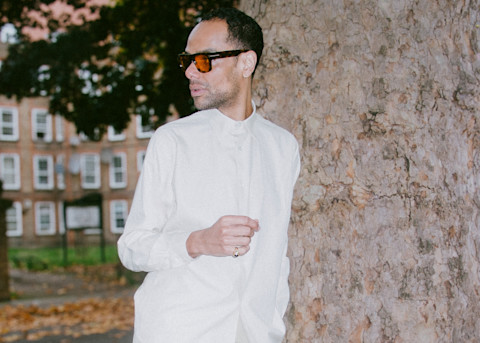On the Road: Grail Hunting Across America
Meet the Japanese vintage sellers who spend months scouring thrift stores and flea markets all over the U.S. in hopes of unearthing rare garments—which then become references for all your favorite brands.

It’s a scorching hot summer day at the Brimfield Antique Market, 66 miles west of Boston, and Shinnosuke Miyachi is ready for a treasure hunt. He strolls along the dealer tents with a swirl of soft serve in one hand, marveling at the sheer vastness of the largest outdoor antique market in America.
Brimfield is famous for its wacky menagerie of oddities: think Keith Haring lithographs for sale next to haunted-looking puppets and antique hunting rifles. The promise of a jackpot awaits those willing to sift through hundreds if not thousands of stalls, bins, and racks.It’s within this frenzy that Miyachi, the owner of Lakewood Clothing in the Tokyo neighborhood of Meguro, stumbles upon what would become a personal grail: a vintage Western-style Levi’s shirt embellished with hand-drawn artwork. It resembles a page in a popular kid’s yearbook. With doodles of cowboy boots and scribbled phrases like “Hicks & Chicks,” the shirt is a mishmash of Americana references that Miyachi finds irresistibly cool.“I was determined to buy it,” he recalls, “even though it was really expensive.”Brimfield is just one stop along Miyachi’s three-week long sourcing trip across America. From antique markets to rag houses, he combs the country for Americana-inflected treasures to stock his Tokyo vintage store, named after Lakewood, Colorado, where he made his first business transaction with a thrift dealer.Last year, Miyachi took three trips to America. Each time, he crafted itineraries steeped in the rugged romanticism of the road trip: national parks, roadside motels, gas stations, greasy burgers. His trips are part of a bigger cultural trend among the Japanese vintage community, where store owners chase the nostalgia of the American road trip as it’s portrayed through ’60s Hollywood road movies.
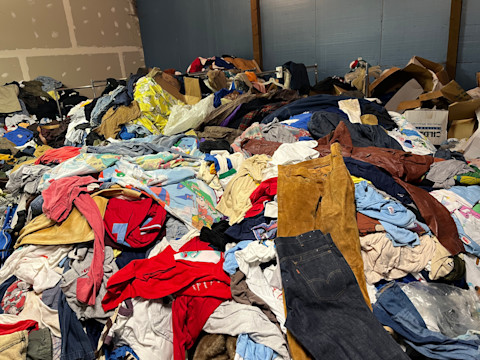
This summer, for example, I met the owner of a vintage store in the trendy Shimokitazawa shopping district, who told me he travels across Texas to source clothing from Goodwills. Tomoko and Yuji Yamamoto, the owners of Sunny Garden in Gifu, regularly embark on a similar sourcing journey. Between wilderness hikes and baseball games (Shohei Ohtani is always a must-see), they makes it a point to meet with local clothing dealers to source high-demand brands like American-made Levi’s. Oftentimes, these business partners offer them friendly suggestions on other cool spots to visit.For these Japanese vintage sellers, the great American road trip isn’t just about sourcing inventory. They’re about chasing a nostalgic Americana fantasy that dates back to the incursion of American soft power after World War II.Jeremy Smith, a vintage connoisseur with over a decade of experience working with Japanese brands in the apparel business, explains how the Japanese gaze on vintage Americana came to be. “During the de facto occupation of Japan during the postwar period, American GI’s would sell their jeans into the black markets, which coincided with the influx of American film and music at the time,” he says. Even as decades passed, mid-century Americana has become canonical to vintage collecting and design in Japan.Today, you can see the influences everywhere. Contemporary brands like visvim, BEAMS PLUS and Neighborhood regularly incorporate interpretations of Americana into their collections, reproducing midcentury designs faithfully or reimagining them with Japanese craftsmanship.Take BEAMS PLUS, which offers collegiate Ivy style through its cropped chinos and button-down oxfords. “Sometimes strong L.L.Bean vibes sneak in with knit-in designs on sweaters,” says Smith. Neighborhood, meanwhile, takes on classic Americana doused in streetwear silhouettes, such as an exaggerated boxy Type 1 jacket or big pleated chinos (which read as inflated versions of the BEAMS PLUS version). With visvim, designer Hiroki Nakamura will take a common vintage military jacket liner design and remix it with high-quality fabrics, like high-density nylon twill while employing Japanese craft dyeing techniques.
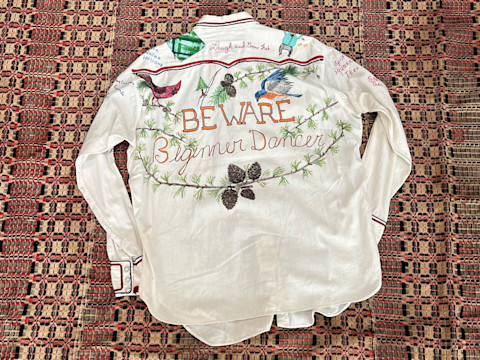
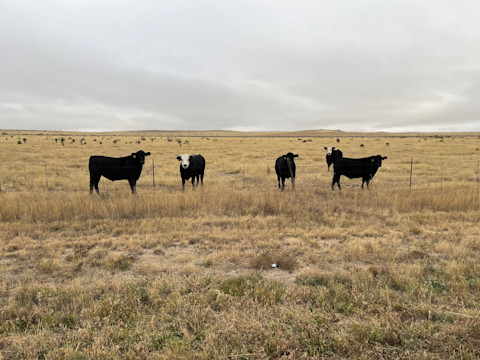
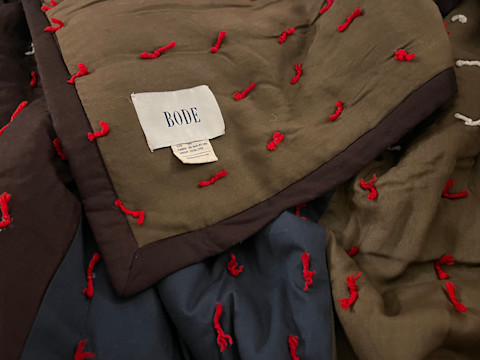
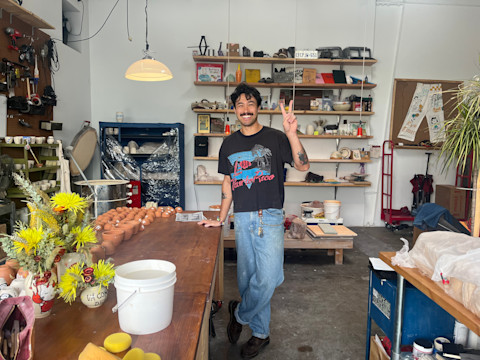
Furthermore, the import of 1960s road movies left a lasting impact on Japanese audiences, crystallizing the road trip as a quintessentially American experience. It also makes economic sense as a means to source vintage clothing abroad. “Most of the primary sources Japanese buyers visit—like estate sales and small, local thrift stores—don’t have the resources to price their goods at market value,” Smith says.Miyachi, in particular, is fond of the American Southwest. He’s been to New Mexico nine times, and can’t wait for his milestone tenth visit.What is it that keeps bringing him back?“New Mexico’s otherworldly landscapes are captivating,” he says, referencing the shimmering gypsum dunes of White Sands National Park. Miyachi has a special interest in folk art, so he likes visiting museums and shops that showcase Navajo pottery and Chimayo woven rugs. “These beautiful crafts embody the kind of America I love,” he says. (In fact, you can find a batch of handwoven rugs sourced from Ortega’s Weaving Shop in Chimayo on the Lakewood Clothing website under the Folk Art section.)
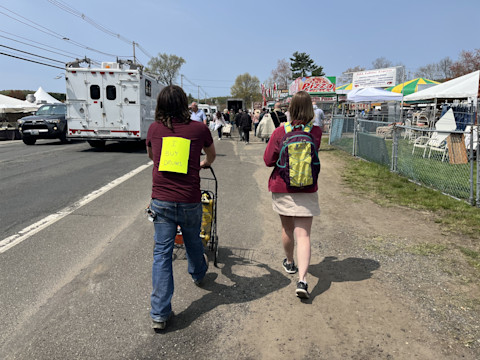
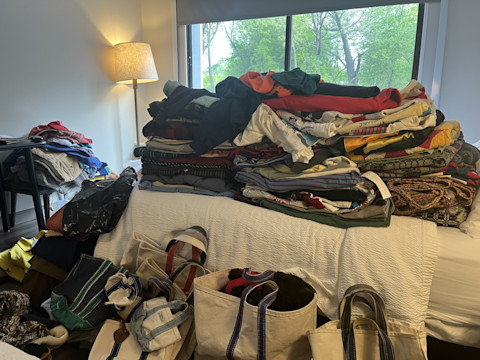
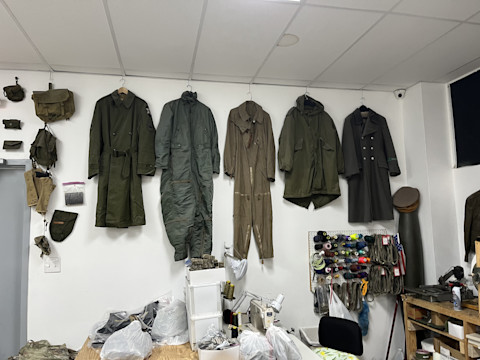

The allure of the Southwest is strong for Japanese vintage sellers. Yamamoto’s favorite state is Arizona, because he loves the “spectacular nature you can’t find in Japan”—such as the crimson cliffs of Coconino National Forest. One of his most prized possessions from his travels is a rare book on Southwestern Native American jewelry.The Japanese appreciation for Native folk art is part of a deeper cultural context. Smith points out that because Japanese vintage enthusiasts come from a nation that has enshrined the preservation of artisan craftwork into law (see: the Protection of Cultural Properties), they are likely to approach things like Navajo silver jewelry with a receptive mindset. On top of that, the nature of their work requires a detailed-oriented eye that’s trained to notice the level of craftsmanship found in folk art. But the reality of vintage sourcing on the road is far from idyllic. It’s a lot of work. “I climb mountains of vintage goods, digging through them,” Miyachi says. “Every time, it leaves my back aching.”On a typical trip, he ships 1,000 to 2,000 pieces of clothing back to Japan. Every item is recorded in his notepad: . It’s also a logistical nightmare, considering he’s always on the move. He frequently drives with his rental trunk stuffed to the brim and crams his motel room with suitcases before offloading his haul at local shipping offices.
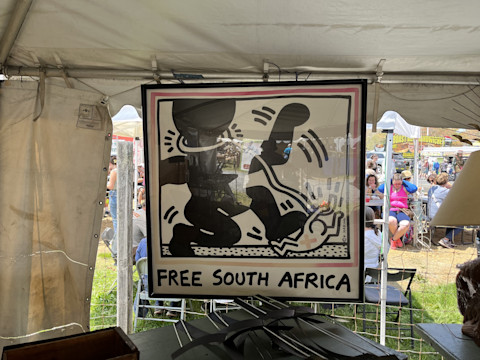
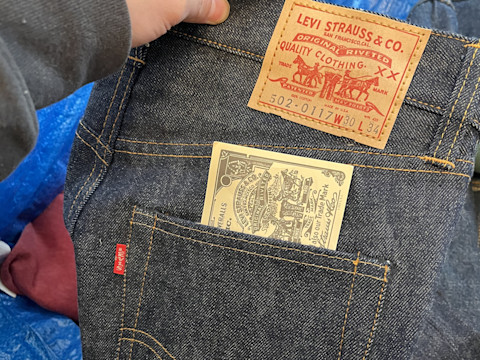
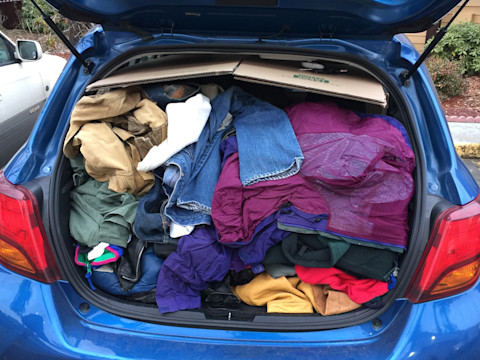
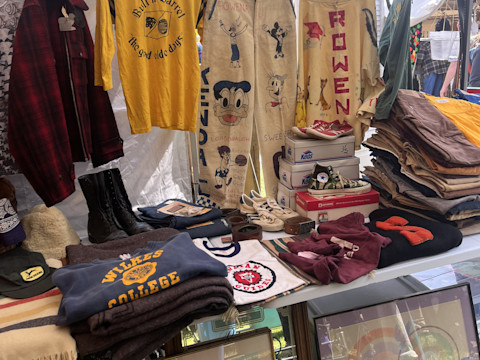
No road trip is complete without a good playlist. “Long drives make me very sleepy,” he laughs. When Miyachi needs to stay alert, he’ll throw on some upbeat city pop or Japanese idol songs. Naturally, spending time in America has exposed him to many English-speaking artists. I ask him if he’s discovered any new favorites.He replies: “Yes. Recently, I’ve been listening to Clairo.”As for food on the road, he keeps it simple. He doesn’t have much time in his packed itinerary, so most days that means a McDonald’s burger or Panda Express combo plate. Supermarket meals are also great in a pinch. “However, I believe it’s important to try local traditional dishes,” he qualifies, adding that the best burger he’s had is the hatch green chile burger from a New Mexico Lotaburger. He wants to try everything America has to offer.The motels, on the other hand, can be hit or miss. Miyachi confesses he’s not great with insects. “If a room looks like it might have bugs,” he says, “I’d rather sleep in my car.”
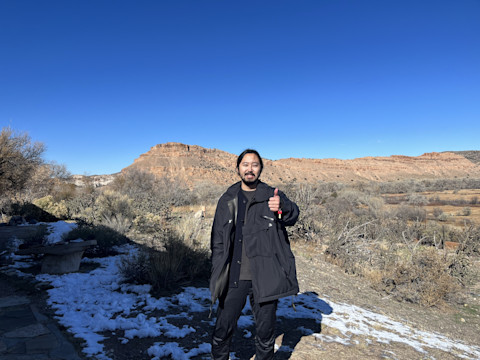
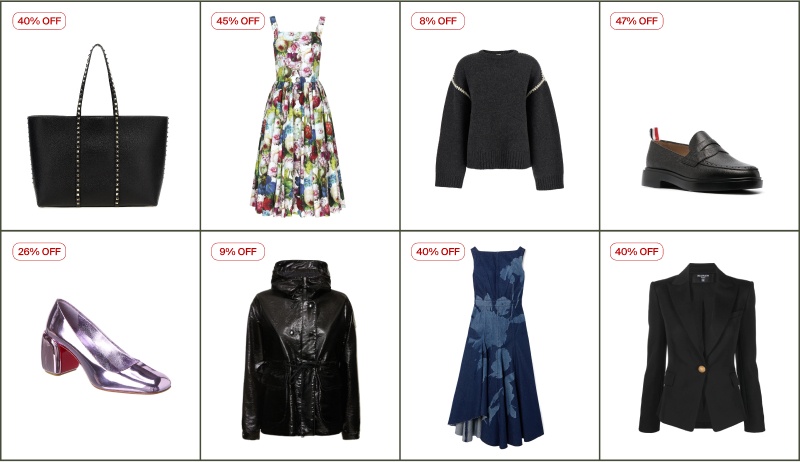 Outsmart Online Shopping With Our Black Friday Cheat Sheet Outsmart Online Shopping With Our Black Friday Cheat Sheet Two things can be true at the same time: It’s the most exciting time to shop of the year. And there’s an overwhelming amount of sales to navigate on the internet. Let’s break down how we help.
Outsmart Online Shopping With Our Black Friday Cheat Sheet Outsmart Online Shopping With Our Black Friday Cheat Sheet Two things can be true at the same time: It’s the most exciting time to shop of the year. And there’s an overwhelming amount of sales to navigate on the internet. Let’s break down how we help. 